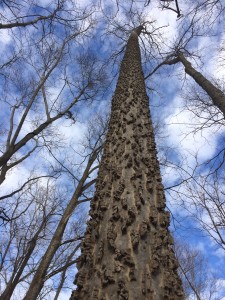
The hackberry, with distinctive bark, is among natives that experts at Trees Forever recommend for planting in the Midwest. (photo/Trees Forever)
By Cindy Hadish/For Radish Magazine
Just as the shady canopies of American elm trees gave way to Dutch elm disease in the last century, the ubiquitous ash tree, a staple throughout the Midwest, is succumbing to emerald ash borer, an invasive beetle that kills all varieties of ash.
The lesson from both is one that Trees Forever, a nonprofit based in Marion, Iowa, often shares.
“Diversity is vital to a healthy forest, whether it be a rural forest or a community or urban forest,” said Debbie Fluegel, Trees Forever Field Coordinator for Illinois. “We never know when the next disease or pest will come through.”
Fluegel said recommendations call for not more than 20 percent of one genus in a community and not more than 10 percent of one species, but some communities, for example, have more than 50 percent maple trees.
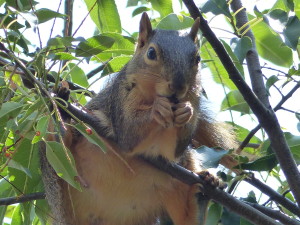
A squirrel sits in a black cherry tree, one of several natives that experts recommend planting in the Midwest. (photo/Trees Forever)
She and Dustin Hinrichs, Trees Forever Field Coordinator for Southeast and Eastern Iowa, provided recommendations for native trees that are often overlooked, but offer colorful fall leaves and in many cases, lovely spring flowers, as well. Natives provide the most benefits to wildlife as shelter and food sources and are hardier and adapted to the Midwestern climate.
“All of these species are suitable for planting in both Iowa and Illinois,” Hinrichs said.

An acorn is shown on a swamp white oak, a tree that supports a wide variety of wildlife. (photo/Trees Forever)
-
Swamp White Oak (Quercus bicolor) is a medium-sized tree that does well in moist to wet soils. The bark resembles white oak and leaves are broad and lobed. In the fall, leaves turn brown, yellow-brown or reddish in color. The acorns are an important food supply for turkeys, deer, raccoons, wood ducks and squirrels. As a family, oak trees support more than 500 species of caterpillars of native butterflies and moths, as well as many other insects and birds. “Restoring oaks in urban areas would go a long way toward improving our nation’s biodiversity,” Hinrichs said.
-
Black Cherry (Prunus serotina) Mature trees have distinctive scaly black bark, resembling burnt potato chips, with long slender, shiny leaves and showy white flowers in the spring. Young trees have smooth, thin, striped bark and release an almond-like odor when the twigs are scratched. Black cherry is a moderately long-lived tree (about 250 years) that loves sunlight. The berries provide food for birds and small mammals in late summer. Cherry trees support a wide variety of native butterflies and moths.
-
Hackberry (Celtis occidentalis) is a fast-growing, medium-sized tree that does well in all soil types and full sunlight. It has distinctive “warty” bark and unequal leaf bases. Yellow-green flowers appear in May, soon after the leaves. In the fall, the asymmetrical leaves turn yellow in color. The orange-red to purple fruit persists into winter months, providing valuable food sources for songbirds. Hackberries support many species of native butterflies and moths, including the Hackberry Emperor.
-
River Birch (Betula nigra) has dark gray-brown to reddish-brown, papery peeling bark. River birch are known for their exfoliating bark, making it a great landscape tree. River birch does well in both wet and rocky areas. The nooks and crannies of the peeling bark provide great hiding places for insects during winter months. In turn, those insects provide food sources for woodpeckers and other birds when they need it most. They also support several hundred species of native butterflies and moths. The seeds and flower buds of river birch are important food sources for songbirds, turkeys and small mammals.
-
American Elm (Ulmus Americana) is a fast growing, hardy shade tree with dark gray, deeply furrowed bark. In the spring, the American elm has small green flowers, loved by bees, butterflies and other pollinators. The flat, oval, and paper-like seeds provide a beneficial food source for birds and small mammals. Leaves turn yellow in the fall. American elm are tolerant of drought and urban conditions, making it a great tree for the street or yard. With the introduction of Dutch elm disease in the 1930s, many American elms were wiped out. Currently five cultivars are tolerant or resistant to Dutch elm disease: Princeton Elm, American Liberty “multiclone,” Independence, Valley Forge and New Harmony.
-
Tulip Tree (Liriodendron tulipifera) is a close relative of the magnolia and is the tallest hardwood in North America. This large shade tree has a distinctive tulip-shaped leaf that turns yellow in the fall. In the spring, the tulip tree produces yellow-green flowers with an orange flare at the base that give off a faint cucumber scent. Tulip trees grow rapidly in moist soils. They support caterpillars of many native species of butterflies and moths, including the Eastern Tiger Swallowtail.
Find more information on the Trees Forever website: www.TreesForever.org
To read more about healthy living, see the Radish Magazine


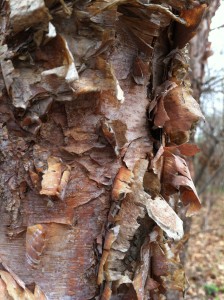
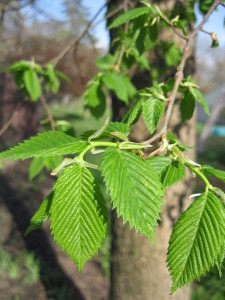
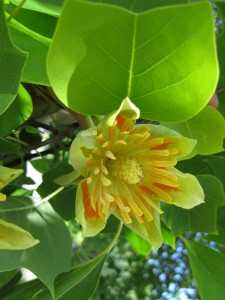
Recommending these species is great, but finding them at a nursery is next to impossible.
We need information on where to find these species and in landscape grade sizes, not 2-3′. Thanks. Kim
Kim,
Here’s another answer. This one is from Dustin Hinrichs from Trees Forever:
To add to Debbie’s list on the Iowa side of the river I would recommend these few locations for starters:
1. Kelly Tree Farm – http://www.kellytreefarm.com/
2. Iowa Native Trees and Shrubs – http://www.iowanativetreesandshrubs.com/Prices_and_Inventory.html
3. Iowa City Landscaping – http://iowacitylandscaping.com/
https://dolmagetreefarm.com
local tree farm here in West Des Moines/Waukee. we purchased an oak and tulip. lovely trees!
Hi Kim!
Thank you for your comment. Here is what Debbie Fluegel from Trees Forever said: You can get all of them at Possibility Place Nursery in Monee, IL, at Forrest Keeling Nursery in Elsbury, MO, & at Spring Grove Nursery in Mazon, IL. If they request those species at their local nursery, the nursery should be able to get them, they have to ask. I know those 3 nurseries have good quality stock.
Hope this helps!
After our we bought a tulip tree from the local nursery, we realized it was never to produce flowers (after 6+ years after planting) — we were told it was a male from the nursery! I’m not sure how to check prior to planting, though we really wanted to have a flowering tree. However, it is a beautiful shade tree.
That’s a good point to note, Michele, and I’m not sure how to check, either. Hopefully, the nursery would know. Glad you’re still able to enjoy it as a shade tree!
tulip trees are monoecious, meaning their flowers are perfect, having BOTH stamens and pistils.
I had a tulip tree in my yard for 25 years. Loved watching it grow from a 10 inch rooting. It grew to be 40 feet tall and started blooming after about 10 years. it was beautiful. I had to sell my house when I was divorced and can’t tell you how sad I was to drive by about 5 yrs after selling and saw the new owners had cut it down. Sick people.
So sorry to hear that, Ann. Truly sad.
Best to know how many twigs and branches fall from River Birch trees, keep them away from your house or you will forever be cleaning gutters all year long! They leave you with adequate fire starter wood if you have a fire pit. I have a full size river birch ten feet from my house, and a fire pit twenty feet away, I keep it well stocked with twigs and branches!
Thank you for your note! Good to keep this in mind.
I have two River Birch and would not have another one.. Very messy.. Every week before I mow I am cleaning up
[…] See information from Trees Forever about caring for storm damaged trees and learn what suggestions they offer for native trees to plant in the Midwest. […]
[…] Related: Experts recommend these native trees to plant in the Midwest […]
[…] More: It’s getting late in the season to plant trees, but learn which native trees experts recommend to plant in the Midwest. […]
[…] More: It’s getting late in the season to plant trees, but learn which native trees experts recommend to plant in the Midwest. […]